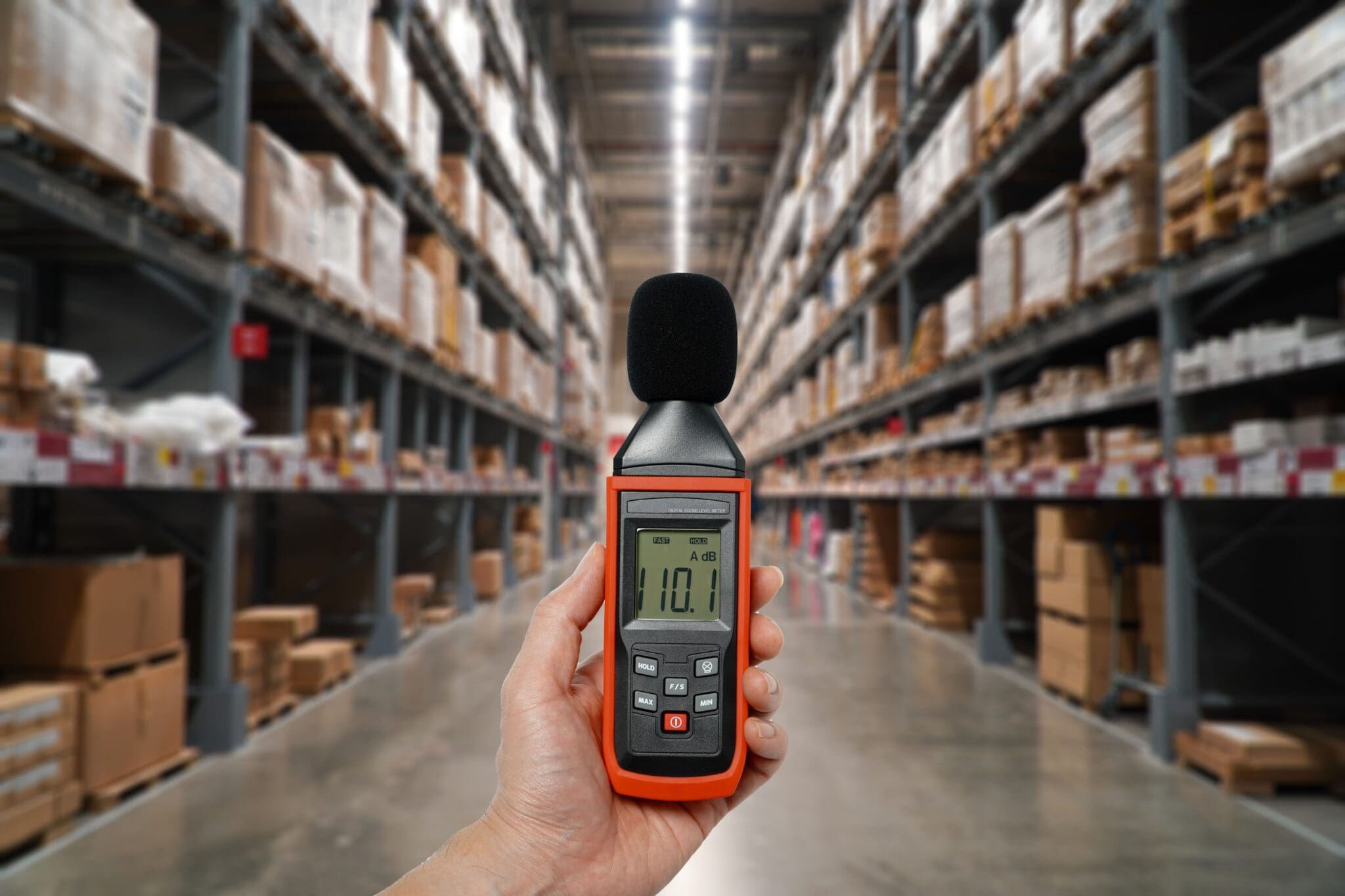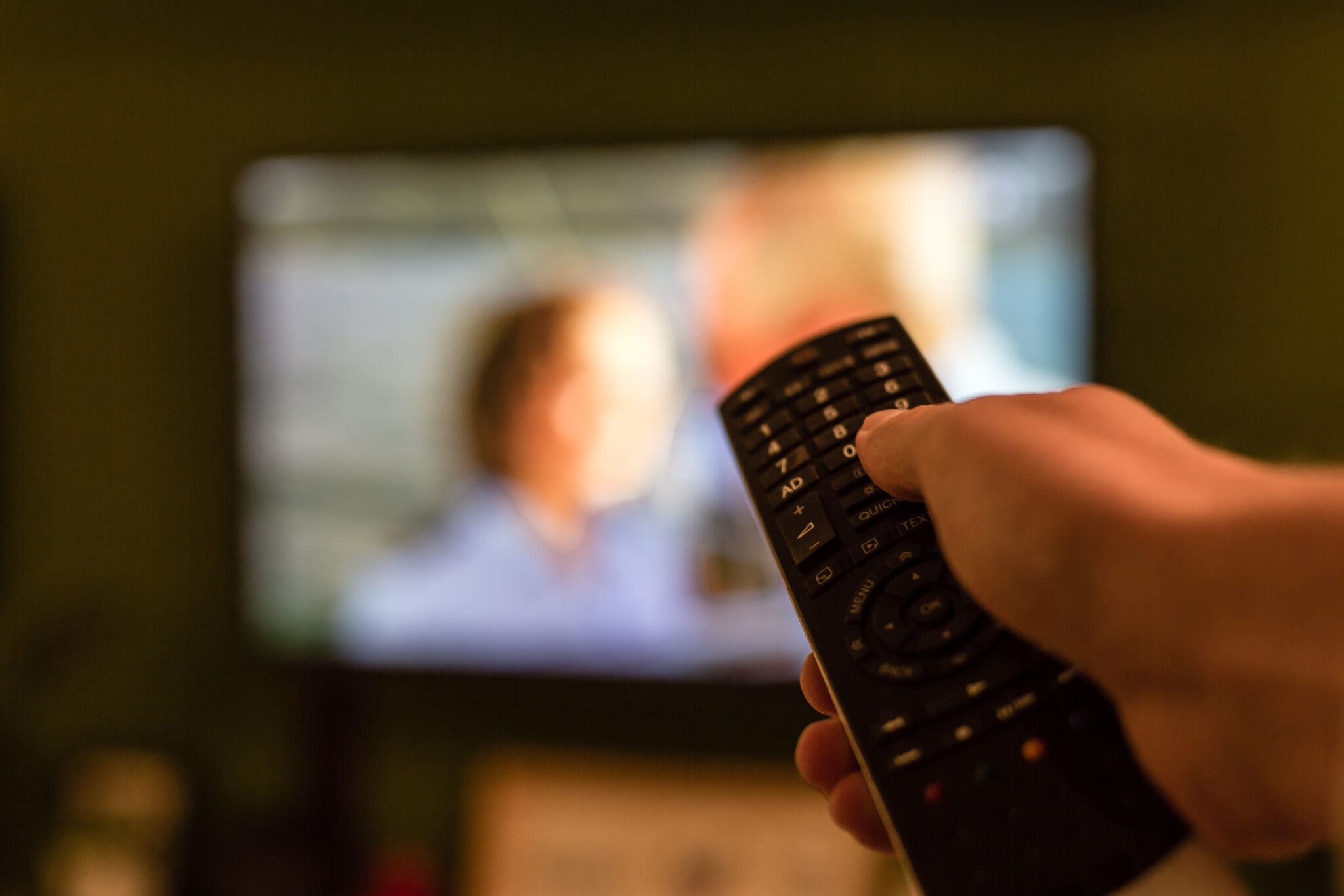In this article
Hearing loss happens when your ability to hear sounds is reduced. It can be temporary or permanent. Some people lose hearing in one ear, others in both. For some, it’s mild and manageable. For others, it’s severe or total, making everyday communication a real challenge.
How common is it? According to the RNID, over 18 million UK adults are deaf, have hearing loss or tinnitus. That’s about one in three of us. And with an ageing population, the number is expected to rise.
But hearing loss isn’t just about not catching what someone said. It affects more than your ears. It can make conversations stressful and lead to misunderstandings at work or home. It can cause people to avoid social situations altogether. Some may feel isolated or even anxious and depressed. It also poses safety risks – not hearing alarms, sirens or traffic can be dangerous.
So, how do you know if you’re at risk? What should you look out for? And most importantly, how can you protect your hearing before it’s too late?
This article will explore what causes hearing loss, the dangers of noisy environments, especially at work, and how to spot the early signs. We’ll look at the treatments available and give you practical tips for protecting your hearing every day. Because your hearing matters – and you don’t have to lose it to value it.
What causes hearing loss?
Hearing loss can happen for lots of different reasons. Some causes are natural and come with age. Others are linked to our jobs, our lifestyle or even our health history. Some types of hearing loss are permanent. Others may only last a short time – like when your ears are blocked with wax or after a loud event.
But how does it happen? And why do some people lose their hearing earlier than others?
Let’s look at the most common causes.
Age-related hearing loss (Presbycusis)
This is the number one cause of hearing loss in the UK. It mostly affects people over 65. As we get older, the delicate structures inside our ears begin to wear down. Tiny hair cells in the inner ear stop working properly. Sounds become harder to hear, especially high-pitched voices or background noise.
It happens slowly, which means many people don’t notice it at first.
Noise-induced hearing loss (NIHL)
The second most common cause is loud noise. This could be from years of working in a noisy job or from a single loud burst – like a sudden explosion or loud bang. It can also come from regular activities like listening to music through headphones, attending concerts or using power tools without ear protection.
Over time, loud sounds damage the inner ear and the effects build up. The damage is usually permanent.
Medical conditions and infections
Some types of hearing loss are linked to health issues. Conditions like otosclerosis or Meniere’s diseaseaffect how the ear works. Infections such as ear infections, measles, mumps and meningitis can also cause hearing damage. These can lead to temporary or permanent problems depending on how serious they are and how quickly they’re treated.
Ototoxic medications
Did you know some medicines can actually damage your hearing? These are called ototoxic drugs. They include certain types of chemotherapy, strong antibiotics and high doses of aspirin. These medicines can affect the inner ear, especially when taken over long periods or at high doses.
Always talk to your doctor if you’re worried about the side effects of your medication.
Genetics and birth complications
Some people are born with hearing loss. This is called congenital hearing loss. It can run in families or be caused by issues during pregnancy or birth. In some cases, the reason isn’t known.
Hearing loss can affect anyone – young or old – and for many different reasons. Understanding the cause is the first step in finding the right treatment or support.
In the next section, we’ll focus on one major cause that affects millions of workers every day: noise at work.

Noise at work
Think your job could be damaging your hearing? It might be.
Every day in the UK, thousands of workers are exposed to harmful levels of noise. You might not notice it straight away, but over time, that daily noise can lead to permanent hearing loss. And once it’s gone, it’s gone.
The sounds of machinery, engines, tools or even loud music can slowly wear down the tiny hair cells in your inner ear. These cells don’t grow back. That’s why protecting your hearing at work is just as important as wearing a helmet or high-vis jacket.
The UK government takes this seriously too. That’s why there are strict rules in place to limit how much noise workers are exposed to each day. These are known as the Control of Noise at Work Regulations 2005.
Let’s look at the industries most at risk.
Common industries at risk
Some jobs are noisier than others. If you work in one of the following industries, your hearing could be at risk:
Construction – Power tools, drilling, demolition work and heavy vehicles all create constant high noise levels.
Manufacturing – Loud machinery, engines, compressors and factory lines can easily exceed safe noise limits.
Agriculture – Tractors, grain dryers and chainsaws are all common sources of noise in farming environments.
Music and entertainment – Musicians, DJs, stage crew and sound engineers often spend hours exposed to amplified music and loud crowds.
Airports – Ground staff, baggage handlers and maintenance crews work near aircraft engines – some of the loudest environments in any workplace.
Under the Control of Noise at Work Regulations, employers must take action if noise reaches or exceeds 80 decibels (dB). At85 dB, they must provide hearing protection and ensure workers use it. For comparison, 85 dB is about the same as standing near a busy road or lawnmower for eight hours.
Not sure if your job is noisy enough to cause harm? If you’re shouting to be heard at arm’s length, it probably is.
Employer responsibilities
Your employer has a legal duty to protect your hearing. If you’re exposed to loud noise at work, they can’t just ignore it. The Control of Noise at Work Regulations 2005 set out exactly what they must do – and when.
Here’s what’s expected:
Risk Assessments
First, they must carry out a proper noise risk assessment. This means checking how loud the working environment is and how long people are exposed to it. If the noise levels are too high, they need to take steps to reduce the risk – not just hand out earplugs and hope for the best.
Hearing Protection
If noise can’t be brought down to a safe level, employers must provide hearingprotection. This could be earplugs, ear defenders or both. The protection needs to fit properly, be comfortable to wear, and be suitable for the job being done. Just handing them out isn’t enough. They also have to make sure workers know how and when to use them.
Monitoring and Signage
In noisy areas, clear warning signs should be displayed so people know hearing protection is needed. Employers should also monitor noise levels regularly – especially if new machines are brought in or the work changes. What was safe last year might not be safe now.
Employee Training
Finally, employees must be trained. It’s not just about giving out kit. People need tounderstand the risks, knowhow to protect themselves and learn how to spot early signs of hearing damage. Training should be easy to follow, repeated regularly, and kept up to date.
If your employer isn’t doing these things – ask why. Your hearing is your responsibility too, but they’re legally required to help protect it.
Employee responsibilities
It’s not just up to your employer – you have a role to play too. Protecting your hearing is a shared responsibility. Even with the best equipment and training, if you don’t use it properly, you’re still at risk.
Here’s what every employee should be doing:
Wearing Protection
If your employer provides earplugs, ear defenders, or other protective gear, you must wear them. Not just when you remember. Every time you’re in a noisy area. One loud shift without protection can do more damage than you think. Once your hearing goes, it doesn’t come back.
Reporting Concerns
Think something’s too loud? Struggling to hear after a shift? Speak up. Report any noise issues or damaged equipment to your supervisor. The sooner they know, the quicker they can act. Staying silent puts your hearing – and possibly your job – at risk.
Attending Training
Employers must provide training, but you need to attend it. This includes learning how to fit earplugs properly, how to spot early signs of hearing damage and what to do if you’re concerned. Taking part shows you’re serious about staying safe.
According to the Health and Safety Executive (HSE), an estimated12,000 people in the UK suffer from work-related hearing problemseach year. That includes bothnoise-induced hearing loss (NIHL)andtinnitus. There are also around 100 new cases of occupational deafness annually. Over the last ten years (up to 2023), only five cases were female. This is likely to be due to smaller numbers of women having working in jobs that meet the criteria.
Most of these cases could have been prevented.
Real-life cases show how serious this can be. In one example, a worker secured a £20,000 settlement after his employer failed to provide proper hearing protection for 15 years.
So, don’t wait until you notice a problem. Take your responsibilities seriously. Your future self will thank you.

Signs of hearing loss
Hearing loss doesn’t always happen suddenly. In fact, for many people, it creeps in slowly over time. You might not even realise it’s happening – until someone else points it out.
That’s why it’s important to know the early signs. The sooner you spot them, the sooner you can take action.
Early signs
Most people notice something’s not quite right when conversations start to become harder to follow. You might:
- Keep asking others to repeat themselves
- Struggle to hear in busy places, like restaurants or on public transport
- Find yourself turning up the TV louder than everyone else in the room
- Have trouble hearing on the phone – especially soft or high-pitched voices
- These signs can be easy to brush off. You might blame background noise or think people are just mumbling. But if it keeps happening, it’s time to pay attention.
Physical symptoms
Hearing loss isn’t just about sound. It can come with physical symptoms too:
- A constant ringing or buzzing in your ears (known as tinnitus)
- A feeling of fullness or pressure in the ears that doesn’t go away
These symptoms can be distracting and uncomfortable. And sometimes even painful. They’re also a warning sign that your ears are under stress.
Behavioural changes
Many people unconsciously start to change their behaviour to cope with hearing difficulties. You might:
- Withdraw from social events because conversations are exhausting.
- Feel tired or irritable from constantly straining to hear.
- Start avoiding phone calls or noisy environments altogether.
Over time, this can affect your mental health, relationships, and quality of life. That’s why early action matters.
Try a Self-Assessment
Not sure if you’re affected? Here’s a quick checklist. Do you:
- Often mishear words or names?
- Feel that people around you mumble too much?
- Get frustrated trying to follow conversations in groups?
- Find it easier to hear men than women or children?
- Need subtitles more often when watching TV?
If you answered yes to two or more, it’s worth speaking to your GP or booking a hearing test.
Why Early Detection Matters
The longer you wait, the worse it can get. Early treatment – whether that’s lifestyle changes, hearing aids or protection – can make a huge difference. It can also prevent further damage and help you stay confident, connected, and safe.

Treatments for hearing loss
Hearing loss can’t always be reversed – but it can be managed. Thanks to modern technology and support services, there are more options than ever to help people hear better and stay connected to the world around them.
Hearing aids
For most types of hearing loss, hearing aids are the first line of treatment. They don’t restore hearing, but they can make sounds clearer and louder, helping you join in conversations and feel more confident in daily life.
There are different types:
- Behind-the-ear (BTE). These sit behind the ear and are connected to a small earpiece. They’re powerful and suitable for most types of hearing loss.
- In-the-ear (ITE). These sit fully inside the ear canal, making them more discreet. They’re usually used for mild to moderate loss.
- Receiver-in-the-canal (RIC). A newer style that combines power with a smaller design.
In the UK, hearing aids are free on the NHS. Your GP can refer you to an audiologist. The waiting time can vary, but you’ll get a full hearing test and advice on what suits you best.
Private hearing aids are also available. They often offer more style choices, quicker appointments and extra features. But they can cost £1,000–£3,000 per ear, so it’s important to compare options carefully.
Cochlear implants
For people with severe or profound hearing loss who don’t benefit from hearing aids, a cochlear implant may be recommended.
This is a surgical device that bypasses damaged parts of the inner ear and sends sound signals straight to the brain. It doesn’t “cure” deafness, but it can greatly improve hearing in quiet settings.
You may be eligible for a cochlear implant on the NHS if:
- You have profound hearing loss in both ears.
- Hearing aids aren’t helping.
- You’re willing to commit to regular follow-up and rehabilitation.
Assessment is done through a specialist implant centre, and support continues after surgery.
Assistive listening devices
Sometimes, hearing aids aren’t enough – or not needed at all. That’s where assistive listening devicescome in.
These include:
- Amplified phones. Make phone calls clearer and louder.
- Alerting systems. Flashing doorbells, vibrating alarm clocks or smoke detectors.
- Personal amplifiers. Small, portable devices you wear around your neck or clip to your clothes.
They’re especially useful at home or in places with lots of background noise. Some are available through local councils or disability services.
Medical or surgical interventions:
Not all hearing loss is permanent. Some types – especially conductive hearing loss – can be treated medically or surgically.
This might include:
- Earwax removal. Blocked ears are a common cause of temporary hearing loss.
- Grommet insertion. Tiny tubes placed in the eardrum to drain fluid, often used in children.
- Treating infections. Antibiotics or steroids can clear up hearing loss caused by middle or inner ear infections.
- Autoimmune-related issues. In rare cases, hearing loss may be linked to immune system conditions and need specific treatment.
Counselling and support
Living with hearing loss isn’t just a physical challenge. It can affect your confidence, mood and mental health. That’s why support and counselling are just as important as technology.
Options include:
- Lip-reading classes. Help you understand more of what people are saying, especially in noisy places.
- Hearing therapy. Teaches coping strategies and communication skills.
- Tinnitus support. For those living with persistent ringing in the ears.
There are also fantastic organisations offering help and advice:
- RNID (Royal National Institute for Deaf People).
- British Tinnitus Association – specialist support for those living with tinnitus.
Preventing hearing loss
Some causes of hearing loss are out of our hands. But many can be prevented. Whether you’re at home, on the job or managing a health condition, small steps can make a big difference. Prevention is always better than cure, especially when it comes to your hearing.
Everyday precautions
We’re surrounded by noise all the time – music, traffic, alarms, conversations. Most of it isn’t harmful. But long-term exposure to loud sounds – even at home – can gradually damage your hearing without you realising.
A few simple habits can help protect your ears:
- Stick to the 60/60 rule. Listen at no more than 60% volume for no longer than 60 minutes at a time. This applies to headphones, earphones and even watching the TV.
- Take noise breaks. If you’re somewhere loud, step away now and again to give your ears a rest.
- Use noise-cancelling headphones. These help block outside noise so you don’t need to turn your music up high.
Think your music’s too loud? A good test is whether others can hear it while you’re wearing headphones. If they can, it’s too loud.
Workplace measures
If you work in a noisy environment, you’re more at risk of hearing damage. Jobs in construction, manufacturing, agriculture and the music industryall carry higher risks.
But the good news is, there are clear legal protections. Under the UK Control of Noise at Work Regulations 2005, employers must:
- Carry out noise risk assessments.
- Provide suitable hearing protection (like ear defenders or earplugs).
- Monitor noise levels.
- Display clear signage in loud areas.
- Offer regular hearing checks for workers exposed to high noise levels.
- Deliver training on noise safety.
Staff must also be encouraged to use the protection provided and report any issues or discomfort. It’s a shared responsibility.
Workplaces can also access helpful resources such as:
- The HSE Noise at Work Toolkit.
- RNID’s training materials.
These can help employers build a proper hearing conservation programme, reducing risk and protecting staff long-term.
Medical and lifestyle habits
Your overall health plays a role in your hearing too. Some medical conditions and medications can affect the ears and lifestyle habits have an impact as well.
Here are a few things you can do:
- Avoid ototoxic drugs.These are medications known to damage hearing. If you’re prescribed one, ask your doctor if there’s a safer alternative.
- Manage chronic health conditions. Conditions like diabetes and high blood pressure have been linked to hearing loss. Keeping them under control helps protect your ears too.
- Stop smoking. Smokers are more likely to experience hearing problems. Quitting improves circulation and can reduce the risk of inner ear damage.
Regular hearing checks are also important. Especially if you’re in a noisy job or have symptoms like tinnitus or muffled hearing.
How to tell if noise is too loud
Not sure whether a sound is damaging your ears? You’re not alone.
Hearing damage is often painless and gradual. But that doesn’t mean it’s harmless. Once lost, hearing rarely comes back.
So how do you know when a sound is too loud? There are some easy ways to tell – both with your body and with simple tools.
Warning signs
Start by paying attention to how your ears and voice respond in loud environments. These signs often mean the noise level is too high:
- You have to shout to be heard by someone standing a metre away
- You experience ringing in your ears (tinnitus) after the noise stops.
- Your hearing feels muffled or dull after leaving a loud space.
- Sounds feel distorted or conversations seem harder to follow.
These symptoms might go away after a while, but over time, repeated exposure can cause permanent damage.
Objective measurements
If you want to be sure, there are tools that help measure noise levels more accurately.
You can use decibel meter apps on your smartphone. Many are free and easy to use. A sound level of85 decibels (dB) or more is the danger zone if you’re exposed to it regularly. That’s about the level of a lawnmower or busy traffic.
In the UK, the HSE’s Noise at Work Regulations set legal limits:
- Daily or weekly exposure should not exceed 87 dB, taking into account any hearing protection used.
- Employers must take action if daily exposure hits 80 dB or more.
Some workplaces may also use professional sound meters to track levels more precisely across shifts and work zones.
Key Takeaways
Hearing loss can be caused by age, noise exposure, medical conditions or genetics. And it’s more common than many realise. Certain jobs carry higher risk, but early signs like struggling to hear in noise or turning up the volume are easy to spot if you’re aware.
The good news? Most hearing loss is preventable. Protect your ears in loud settings, take breaks from noise and use hearing protection when needed. Treatments like hearing aids, implants and support services can greatly improve quality of life.
Be proactive. Get your hearing checked regularly and stay aware of your environment. Small steps now can protect your hearing for years to come.






